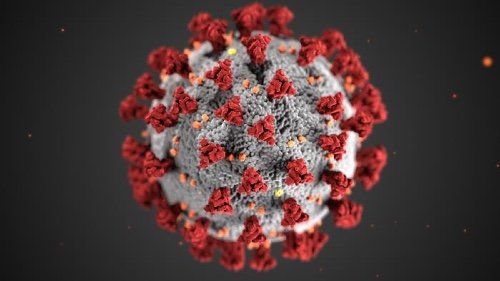Guidance for Ultrasound Protection During COVID-19
American Institute of Ultrasound in Medicine publishes 9 tips to protect patients and sonographers.

As uncertainty around the spread of COVID-19 continues, diagnostic imaging professionals are being called upon to scan an increasing number of patients who might have the viral infection.
To help ultrasound technologists protect both themselves and their patients, the American Institute of Ultrasound in Medicine (AIUM) recently released guidance designed to help prevent further transmission.
“The AIUM strongly encourages cooperation among employers, sonographers, and manufacturers to promote a safe work environment,” the organization said in a statement.
While this guidance can be used for overall direction, the organization reiterated that sonographers should also be sure to comply with all regulations and protocols implemented by their home institutions. In addition, they should be sure to follow all local government and Centers for Disease Control & Prevention recommendations.
In an effort to curb any further viral transmission, the AIUM published these nine precautions:
1. Ultrasound providers with specific health conditions that make them vulnerable should have limited patient contact.
2. Sonographers should complete infection-control training and should be fitted for respirators, such as N95 and FFP3), if required.
3. Respect scheduled appointment times; spread out appointment times to avoid crowding in the waiting room; minimize the number of patients in the waiting room; space waiting room seats at least 6 feet apart; and, supply masks to both patients and caregivers upon arrival, if available.
4. No visitors should be allowed in the exam room with the patient, including medical trainees and students.
5. Assume every patient has COVID-19, and clean and disinfect the equipment and room at the end of every clinic.
6. Perform hand hygiene before and after every patient encounter, contact with potentially infectious material, and before and after removing personal protective equipment. Proper hand hygiene can be performed with an alcohol-based hand rub (with 60 percent-to-95 percent alcohol) or by washing hands with warm water and soap for 20 seconds. Use latex-free disposable gloves during the ultrasound exam, and change them after every patient.
7. Perform scan with one hand on the transducer and one on the keyboard and machine controls. This helps avert any cross-contamination due to aerosols and particulate matter that can accumulate to the crevices of the keyboard.
8. If scanning a patient in isolation, put on any personal protective equipment prior to entering the room.
9. Properly clean and decontaminate any reusable personal protective equipment. Wear surgical facemasks when in close contact with patients, and put them on before entering the care area. If N95 respirators or higher are available, use them in place of a facemask. Wear reusable or disposable eye protection. Put on clean, non-sterile gloves before entering the exam room, dispose of them when leaving the room, and perform hand hygiene immediately. Wear a clean isolation gown. Reusable gowns should be held in a dedicated container, and disposable ones must be discarded after use. If gowns are in short supply, prioritize them for aerosol-generating procedures and high-contact patient care activities.
New AI-Enabled Portable Ultrasound May Facilitate 50 Percent Reduction in Cardiac Imaging Scan Time
March 28th 2025Artificial intelligence (AI)-powered measurement capabilities provide key features with the Compact Ultrasound 5500CV device, which was unveiled at the American College of Cardiology (ACC) conference.
The Reading Room: Racial and Ethnic Minorities, Cancer Screenings, and COVID-19
November 3rd 2020In this podcast episode, Dr. Shalom Kalnicki, from Montefiore and Albert Einstein College of Medicine, discusses the disparities minority patients face with cancer screenings and what can be done to increase access during the pandemic.
Can Ultrasound-Based Radiomics Enhance Differentiation of HER2 Breast Cancer?
March 11th 2025Multicenter research revealed that a combined model of clinical factors and ultrasound-based radiomics exhibited greater than a 23 percent higher per patient-level accuracy rate for identifying HER2 breast cancer than a clinical model.